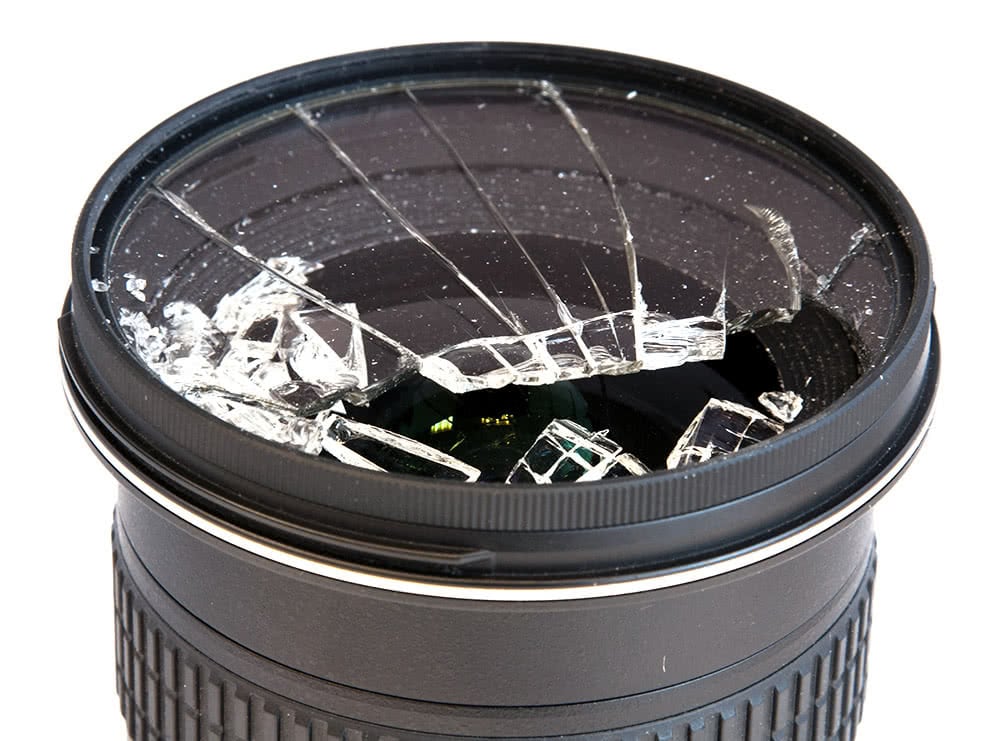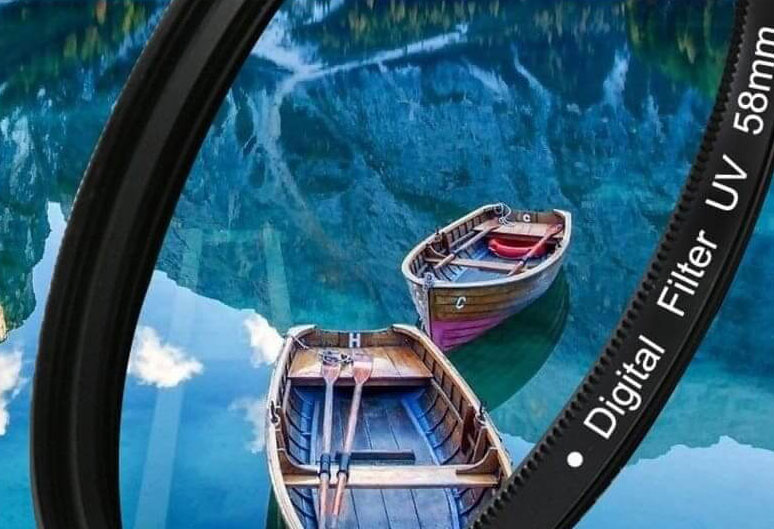I’m sure we all recognise the importance of keeping a UV or protector filter on our lenses, but judging by the number of scratched front elements we see in our workshop every week, it looks like some photographers believe in living dangerously.
It can sometimes feel like a hard-sell when the salesman suggests you part with even more money on top of the considerable amount you’ve just handed over for your lovely new glass, but there’s a good reason for it…

This 12-24mm ƒ/4 Nikkor arrived recently looking rather sorry for itself and an accidental drop. Luckily the filter had taken the brunt and the front element was untouched, so £40 for a new filter and the customer was happily on their way, rather than spending around £275 to have a new front element fitted.
Oh, and another £40 for a filter, in case the lens attempted to defy gravity again!
Call our sales team for details on 0207 582 3294 or email sales@fixationuk.com


I always remove the filter before shooting.
Great post, however I’d like to make a serious comment! Not all filters are equal and can cause problems, especially with certain longer focal length zoom lenses of which I have experience. Lets take the Nikon AF-S 80-400mm f4.5-5.6 VRII G lens as an example. Fit a cheap UV or protection filter costing around £20-30 and one is asking for trouble. On wide apertures the diffused background can become most unsightly and almost with a “straw” effect. Fit an uber expensive B+W 77mm 007M MRC Nano Coated Clear Glass Protection Filter costing around £80 (other brands are available) and the problem disappears. I have never experienced this problem on prime or short zooms only on long zooms. This issue has been discussed numerous times on various Nikon forums and all arrive at the same conclusion, buy cheap and you’re looking for trouble.
Richard
Hi Richard,
A very good point and well made 🙂
I know it’s a pain, but you could always use the bit of plastic that Nikon provides with each and every lens; aptly called the lens cap.
I’m a hypocrite, I use a Hoya!
The easy way to assess the impact of a filter on lens quality is to set up a test with two photos, one with and one without. Having done this, I can honestly say there is either no or at most minimal impact using Hoya Pro filters.
Apart from the protection, I’d rather clean a filter than risk damage to an expensive front element.
Interesting that you referenced the Hoya Pro-1 U…that was the one ‘protecting’ my Nikon 70-300. Filter took a hit whilst I was crossing a stile and it shattered. Unfortunately, without thinking, I tried removing it a little later and now have a scratch on the lens front element which I’m sure came from the removal, rather than the original impact.
Beware! If the filter breaks, very carefully remove the broken glass shards (vacuum cleaner?) before unscrewing the ring.
And I did replace the filter…
I appreciate that filters are a great way to save your lenses from damage and dust etc and I do personally use them for certain situations… but when you have just spent £2k for example on a lovely piece of glass to only go and put a cheap inferior piece of glass on top it kinda defeats the point doesn’t it… Or do you think you would never see the difference ?!
Hi Nick. We absolutely agree, and always recommend multi-coated filters by a reputable brand. The example we used in the article was the Hoya Pro-1 UV.
What can I use to protect a Nikon 14-24mm f2.8 lens ?
Hi Jeff. I’m afraid you’re just going to have to carry on being careful!
hey is the £40 UV filter glass as good as the optimum grade glass on a professional lens? I don’t like using UV filters over my Nikon ED lenses I just use my lens hood to protect my lenses. What brand of filter would be the same quality? cheers Annie
Hi Ann. The figure we quoted is for a 72mm Hoya Pro-1 UV; a high quality, multi-coated filter. We would always recommend a multi-coated filter by a reputable brand.
Why not. If I use the above forementioned UV lenses on my Leica M glass, (£3 and 3.75K respectively) why do you fear quality UV filters, that is illogical?
Lens caps are used for when the camera goes back into the bag at the end of a shoot to protect the UV filter.
UV filters and lens caps are non-arguments, surely? But them I have only been a professional for 28yrs.